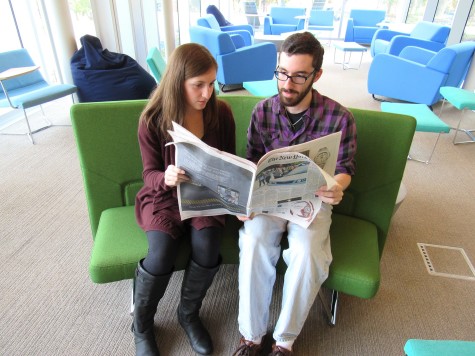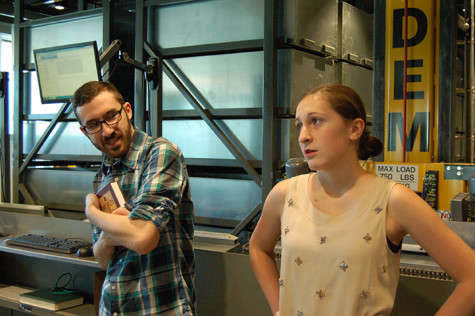He said, she said: How much vacation is too much?

Photo credit/ Connor Moffitt
November 15, 2015
She said: Too many workaholics
America is a country full of opportunity. There are so many careers available to those who seek them out. However, this career-driven society has created a class of workaholics.
In fact, Project: Time Off states that “American workers report just 16 [paid vacation days] used in 2013,” about four days less than Americans took in the 20th century.
In order to combat this trend of leaving vacation time unused, LinkedIn and other new-age technology companies have switched their vacation policies to a “discretionary time off” (DTO) model.
Basically, employees can work with their bosses to schedule more flexible vacation time instead of working with a strict amount of vacation days.
Giving employees control of their days off may seem like a bad idea, but it has proven to be otherwise. According to Pat Wadors of LinkedIn , the policy “will give… employees the ability to better meet their personal needs,which will then allow them to bring their best self to work.”
Unlimited vacation time is also beneficial because it strengthens the bond between employee and employer. Since employees work with managers to figure out their vacation time, it leaves the employees with more responsibility and a greater trust in employers.
Entrepreneur magazine reports that”when employees feel trusted and valued by their employers, they gain an enhanced sense of purpose, motivation and responsibility.” Both the employee and the employer experience some sort of job satisfaction increase.
Contrary to popular belief, using paid vacation days ends with a positive result. It allows for more satisfied employers, more efficient working hours, and happier employees. The DTO model defies a system of vacation time that has been in place for years. Sometimes, a break in tradition is what the world needs.
He Said: Unlimited vacation has limited benefits
Starting on Nov. 1, LinkedIn, the massive corporate and professional networking site, will begin to offer its own unlimited vacation time plan,following suit with similar companies like Netflix and General Electric. Thiswill allow the approximately 6,000 employees of LinkedIn in the United Statesto have as much vacation time as they want, as approved by managers and withoutchanging their schedules or having leaves of absence.
Pat Wadors, LinkedIn’s chief human resource officer, said she wants this new policy to empower both managers and employees in allowing for more flexibility, according to Huffington Post.
If Wadors is looking to empower her employees, she ought to try something else.
While adults in a professional workplace should arguably not need to be micromanaged, the strain on management and work among colleagues certainly will increase with unlimited vacations. Managers who are difficult to negotiate with for vacation time will be seen as villains, while managers who haphazardly dish out vacation time may put projects in jeopardy.
Employees would need to know they could trust their bosses to receive vacation time when they need it; they won’t be able to take it really as they please. They also need to trust their bosses to know when all team members of a project need to meet a deadline; otherwise, the workplace could be a very volatile environment.
When employees ask for vacation, they also may feel guilty. Their colleagues may have more deadlines to meet or less time to travel, making this optional time strategy a point of division. Without a set number, it’d be hard for everyone in a given year to have taken the same amount of days.
Some companies such as Kickstarter actually ran into this problem in which workers used less vacation time due to guilt and other factors, also according to Huffington Post, and ultimately changed vacation time models.
In theory, the idea does sound rather nice, and many companies are doing it with the right intention: to allow their employees freedom, to empower, and to show real concern for their employees’ well-being. But, sometimes structure can take care of that, and unlimited vacation has really limited benefits.
Contact the writers : [email protected] and [email protected]














